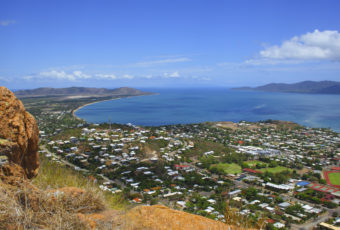Monash unveils Earth Sciences Garden
Sept. 15 marked the opening of the new Monash Earth Sciences Garden at the university’s Clayton Campus in Melbourne; the first of its kind in Australia and the most comprehensive worldwide.

Inspired by the geology and physical geography of Victoria, Australia, this ‘living’ geological map comprises a stunning arrangement of nearly 500 rock specimens, weighing up to 14 tons, laid out to represent a pattern of rock outcrops and set amongst beautiful native plants representing each geographical region.
Monash University’s Head of School, Earth, Atmosphere and Environment, Professor Sandy Cruden, who was part of the team of earth scientists who developed the Monash Earth Sciences Garden concept, said the Monash Earth Sciences Garden establishes a brand new, hands-on approach to teaching geology, physical geography and atmospheric sciences.
“The Earth Sciences textbook is brought to life by this dynamic outdoor classroom which offers a practical approach to learning field measurement and mapping techniques, and rock and mineral recognition skills. It reflects the Faculty of Science’s wider approach to teaching science in more innovative and engaging ways,” Professor Cruden said.
Officially opening the Monash Earth Sciences Garden, Director of the Geological Survey of Victoria Paul McDonald welcomed the innovative new teaching resource and what it means in training future geologists.
“More than ever we need graduates in geological sciences who are ‘field ready’ and capable of stepping straight into the diverse range of careers this dynamic area of science offers. The Monash Earth Sciences Garden provides this crucial hands-on exposure to the Earth’s rich geological formations and will inspire future generations of Earth Scientists.”
Aimed primarily at undergraduate students as well as secondary and high school students, the 120 by 30 metre Monash Earth Sciences Garden also provides a beautiful relaxation space for students and visitors.
The rock specimens represent a variety of igneous, sedimentary and metamorphic rocks found in Victoria. Highlights include
- 125-million-year-old Cretaceous sandstone from the Otway Ranges, where significant dinosaur fossils have been found and continue to be studied at Monash University. These dinosaur and early mammal remains are from creatures that lived near the South Pole in a large, forested river system that developed as Australia and Antarctica began to break apart, offering unique insights into life on a significantly warmer Earth. An important dinosaur fossil, Noddy, will be displayed for photography and filming purposes at the launch and palaeontologists will be on hand for interviews.
- Large black volcanic ‘bombs’—approximately 1 metre in diameter—from an 8,000-year-old volcano near Colac. This volcano is located in the Newer Volcanics Province (NVP), which stretches from Melbourne’s CBD to Mount Gambier in South Australia and contains at least 437 volcanoes ranging in age from 8 million years to just 5,000 years, some of which are still considered to be active. The basalt lava that erupted from these volcanoes forms an integral part of Victoria’s rich historical heritage as the rock, commonly called bluestone, is used extensively in building, paving and roads.
- Dramatic basalt columns similar to those located within the Organ Pipes National Park (near Calder Racetrack). These represent lava flows from the NVP volcanoes, which filled in valleys and created western Victoria’s flat landscape.
- Spectacular 400-million-year-old limestone from Buchan in eastern Victoria, comprising fossils of marine creatures that were building reef systems in tropical seas when Victoria straddled the Equator.
- Folded rocks and quartz veins representing the geology of the Victorian Goldfields. The abundant gold in Victoria made Melbourne the richest city in the world for a while, and provided the foundation for growing the world’s most liveable city.
- A seasonally dry, mud billabong that reflects the semi-dry south-eastern Australian climate. The billabong fills with water during wet weather and naturally dries up at other times, forming large mud cracks. This enables students to study how present day events may be recorded and traced back through geological time.
*

































Ask A Question
Ask us about your program of interest, or if you have a question about our services.
CONTACT US TODAY